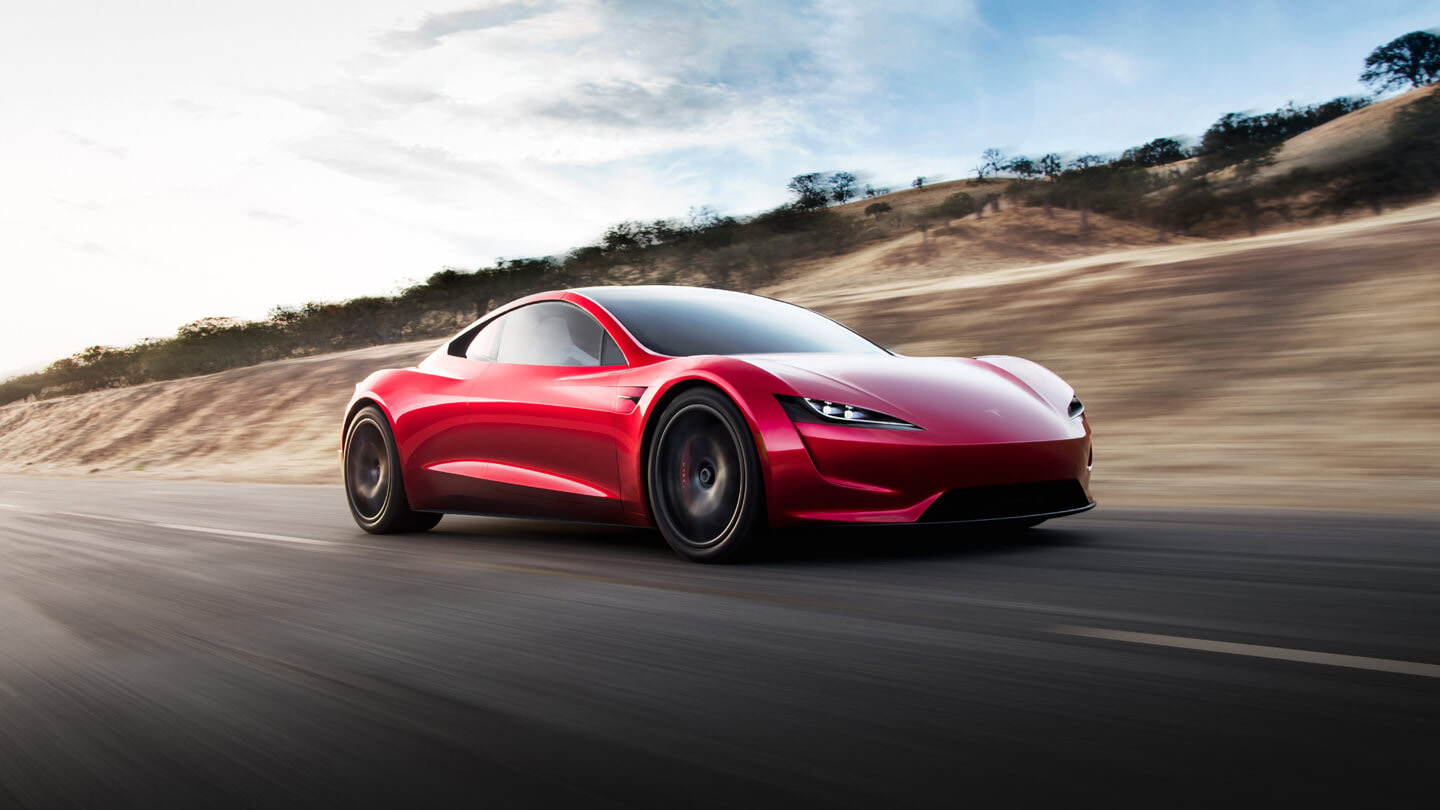Tesla could have made a 600-mile EV — so why didn't it?
Electric cars shouldn't have range caps imposed unless there's a very good reason

Despite all the progress EVs have made over the past 10 plus years, the subject of range is still brought up a lot. This is despite the fact a lot of EVs have over 200 miles of range, while the best models can pack in well over 300. In some cases, like the Tesla Model S, the battery can handle over 400 miles.
I bring up Tesla not just because the automaker offers some of the best range on the market, but because Elon Musk has been talking about his views on range again. Views that reiterate his opinion that a car doesn’t need to be able to travel over 400 miles on a single charge.
Speaking on Twitter, as the Tesla CEO is wont to do, Musk admitted that Tesla could have released a car with over 600 miles of range last year. But didn’t because “that would’ve made the product worse imo”
We could’ve made a 600 mile Model S 12 months ago, but that would’ve made the product worse imo, as 99.9% of time you’d be carrying unneeded battery mass, which makes acceleration, handling & efficiency worse. Even our 400+ mile range car is more than almost anyone will use.March 2, 2022
Range isn’t necessarily everything....
Musk’s reasoning is logical. More range is usually accomplished with larger batteries, which add to the weight of the car. That affects a bunch of different performance factors, including acceleration, handling and energy efficiency.
That last one is particularly important, because more weight means you need more power to move around. The more power wasted moving, the lower your overall range. Which leads to bigger batteries to boost range, and so the cycle continues.
The GMC Hummer EV is a good example of this. The electric truck weighs 9,000 lbs, and 2,923 lbs of that comes from the truck’s 212.7 kWh battery. That’s around the same as a single Honda Civic. Needless to say, the gargantuan truck’s efficiency is dreadful, with just 47 MPGe (miles per gallon equivalent).
The Tesla Model X, the largest of Tesla’s current portfolio, offers 97-86 MPGe depending on how big the wheels are.
Plus, batteries are expensive as it is, and the bigger the battery the more it’s going to cost. That goes some way to explaining the Hummer EV Edition1’s $110,295 price tag.
You also have to consider that Tesla makes premium sporty cars, which focus on speed and acceleration (especially with the Model S Plaid). Heavier cars don’t have nearly as impressive performance stats.
400 miles of range is still a heck of a lot. More than the overwhelming majority of EVs on the market right now, so it’s not like Tesla needs to prioritize range over everything else just to satisfy the whims of the range-anxious.
But long-lasting range is still crucial
However, I don’t agree with Musk that range should be capped. 400 miles is a lot, but if it’s possible to get more, and we're able to balance the other factors, why shouldn’t we do that?
This isn’t the first time we’ve heard Musk’s views on range. Last year, around the time of the launch of the Model S Plaid, Tesla also cancelled the Model S Plaid Plus. Not because that name is a mouthful, but because, according to Musk there was “no need, as Plaid is just so good”.
While the performance of the Plaid Plus was marginally better than the standard Plaid, the car was set to come with a range of 520 miles. The standard Plaid offers up to 396 miles; while impressive, that isn’t nearly as good.
At the time Musk claimed that range “doesn’t really matter” once you hit the 400-mile mark. "There are essentially zero trips above 400 miles where the driver doesn’t need to stop for restroom, food, coffee, etc. anyway,” the Tesla CEO said.
Which is true. 400 miles at 70 miles per hour would take you five hours and 43 minutes to drive. While you realistically wouldn’t get that far, since driving at high speed does use up more power, that’s a long time to be behind the wheel of a car. You should not be driving those sorts of times without a break, even if you have a superhuman bladder and plenty of food and drink on hand.
In Tesla’s case the idea is you stop somewhere, plug your car into a Supercharger, do what you need to do, and drive off. In that time, in theory, your Tesla will have added close to 200 miles of range.
Which isn’t terrible, though it relies on everything working perfectly.
Rapid and Supercharging have their limitations
The main issue is that things can and do go wrong on the side of the highway. There may not be any free charging bays, for example, meaning you add time to your journey waiting for someone else to leave.
There’s not a huge risk of this for Tesla drivers right now, since Supercharger locations tend to have several chargers, but it’s a very real concern for non-Tesla cars. I have driven up to various rapid charging points only to find that either the charger is broken, or someone else has just plugged in.
Plus, as Superchargers start accepting non-Tesla cars, Tesla owners may start feeling the consequences for themselves.
Charging speed figures aren’t always representative of what you’ll get in the real world either. Those figures assume that you can get the peak charging speed, which isn’t always the case.
Battery recharging is a complicated process, and your exact speed depends on a huge number of factors. The main one is how many other people are charging at the same location, since the grid can’t provide everyone with the maximum amount of power. The more people there are plugged in, the slower everyone’s charging becomes.
Likewise, your exact charging speed is dependent on the battery itself. Charging slows as you get closer to 100%, and can fluctuate with battery temperature. Batteries don’t like being too hot or too cold, since it affects the internal chemistry and the amount of current it can take. A lot of cars do have systems to optimize temperature, though they require power to operate. More power consumption keeping the battery happy means more time plugged in.
It’s quite a bit different from a non-electric car, where the most complicated process is remembering to use the right fuel. A process that also only takes a few minutes.
No amount of range is going to completely remove the need for charging, especially in a long trip. But the longer a car can go without having to stop, the more comfortable it’s going to be. Even if the driver has to stop for a break, a long-range car won’t necessarily need to plug in. So it’s not a disaster if there are any issues that force the driver back on the road without topping up their battery.
Plus, as battery technology improves, we’re going to see cars going further without necessarily adding more weight. After all, we've already seen automakers reducing battery size (and weight) without any loss in capacity.
Tesla’s done it with the 4860 cells, and Mercedes managed it (in simulations, at the very least) with the Vision EQXX Concept. So we don’t need human-imposed limitations that prevent the cars from going as far as possible.
Bottom line
As is always the case with car development, this is all a balancing act. More range is great, and very important, but there are other factors at play - though which ones all depends on the automaker in question. Be it speed, handling, design or something else entirely, automakers are never going to focus on one or the other.
Of course, Tesla may not sell a car with more than 405 miles of range right now, but that may not be the case in future. Previously the automaker promised that the tri-motor Cybertruck would have over 500 miles of range. Meanwhile, the second generation Tesla Roadster is set to offer an insane 620 miles, along with a 250mph top speed and 1.9 second 0-60 time. That's even faster than even the Model S Plaid, all while offering 1.5 times the range.
You see? Balance. Range is great, more range is better, but having it doesn’t necessarily mean we can’t have a bit of everything in a single car.
Read next: This report might make you think twice about buying a Tesla
Sign up to get the BEST of Tom's Guide direct to your inbox.
Get instant access to breaking news, the hottest reviews, great deals and helpful tips.

Tom is the Tom's Guide's UK Phones Editor, tackling the latest smartphone news and vocally expressing his opinions about upcoming features or changes. It's long way from his days as editor of Gizmodo UK, when pretty much everything was on the table. He’s usually found trying to squeeze another giant Lego set onto the shelf, draining very large cups of coffee, or complaining about how terrible his Smart TV is.
